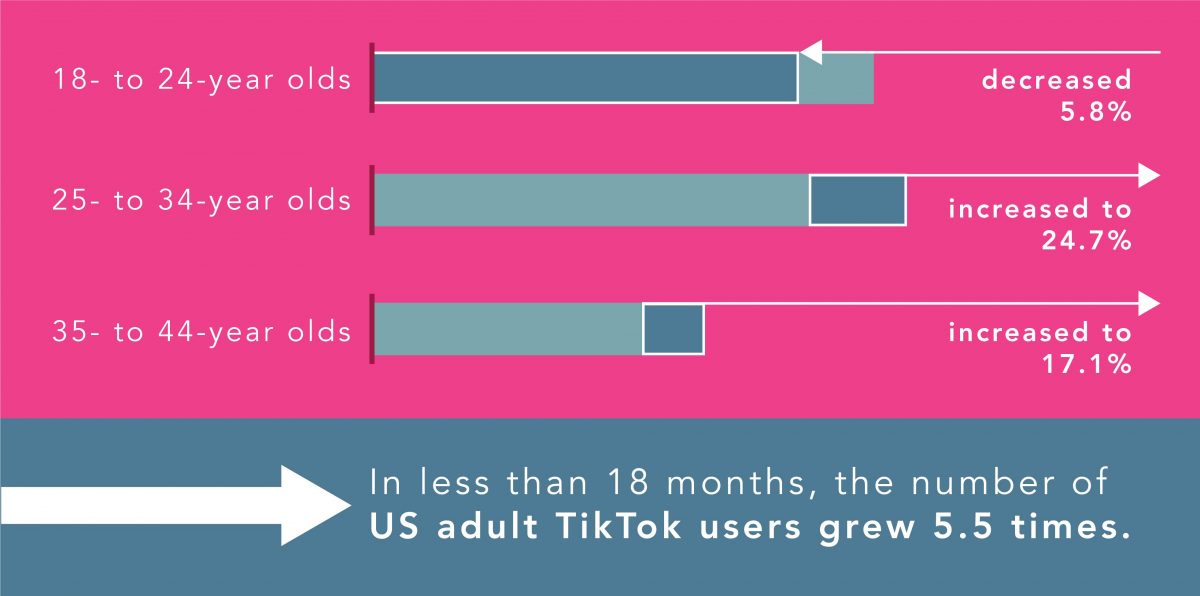When we see a social media platform take off, it’s hard not to immediately want to jump on the platform and start pumping out content. Sometimes this is exactly the right move for a brand, but other times it ends up being extremely time-consuming without a clear payoff.
Before your challenger brand decides whether TikTok is right for your social media strategy, there are a few key factors you should know about which could greatly impact TikTok’s ROI for your brand—especially in the US in the coming few months.
What Does the Future Look Like for TikTok?
Compared to a few months ago, the future is looking slightly more promising for TikTok. In early August 2020, the Trump administration threatened to shut down the platform’s operations in the US – in 45 days – due to data security concerns. Since then, TikTok’s parent company, China-based ByteDance, has taken extraordinary measures (especially compared to other leading social platforms) to ensure all of the government’s concerns are adequately addressed – with the primary effort being an ownership transfer of TikTok’s US operations to a US-based company or companies.
While the threat of a ban from US app stores remains as the details of an ownership transfer are hammered out, neither industry professionals nor app users are preparing for President Trump to follow through on his threat this late in the presidential term and after such significant efforts were made to meet the demands. In the meantime, TikTok continues to plan for the future, making updates and improvements to the app and even recently beginning to test a new three-minute video format.
What’s Unique About TikTok?
The second thing to understand about TikTok is why the app has taken off so quickly. There are a few key differences that differentiate TikTok from apps like Vine or even Instagram, that make it uniquely appealing.

1. TIKTOK’S CONTENT ALGORITHMS
When a creator uploads a video to TikTok, its algorithm first shares the video with a small group it determines as likely to engage with the video based on past behavior. If that group responds well to the video by engaging with it or watching in full, TikTok then shows it to more users who historically share similar interests.

2. THE FOR YOU PAGE (FYP)
To ensure users have access to a variety of new content, while still maintaining visibility to their favorite creators, TikTok offers two feeds: Following and FYP.
The FYP is intended to feature new content from new creators, based on each user’s engagement history. The two-feed setup helps prevent issues like we often hear about with Instagram, where users are only served content from accounts they constantly make an effort to engage with.

3. THE CREATOR FUND
Recently, TikTok launched a fund to monetize approved creators on the app based on the number of views and engagements their videos receive natively.
While brands can’t be a part of the creator fund, they do have access to the Creator Marketplace where they can search and find influencer partners on the platform. Direct compensation means users are actively helping support the creators they care about, and ensures creators have a reason to stay on the platform instead of moving their following to a different app.

4. MUSIC CLIPS
TikTok’s video memes are often created by using sound clips. These can either be recorded by users or chosen from TikTok’s audio library. Users are able to view the title of the sound clip while watching videos and click it to use that track in one of their own videos or to view other videos using that audio.
The reason TikTok is able to offer popular songs for use in their videos without users needing to worry about licensing is that third-party audio tracks are limited to 15 seconds, unless the artist specifically supplies a longer clip to TikTok. While brands were also able to utilize these tracks in the past, changes to TikTok’s Terms and Conditions no longer allow brands to use all tracks without facing liability issues. Instead, TikTok now offers a library of royalty-free audio clips for brands, but most of the app’s most popular songs aren’t included.
What is TikTok’s Userbase Like?
You’ve likely heard TikTok be referred to as the Gen-Z app, and while Gen-Z is still the largest demographic on the app, the main audience demographics have changed significantly since April.

TikTok is a great place to be if your brand is looking to get in front of a young Millennial, Zillennial, or older Gen-Z audience. And it’s likely these demographics will continue to increase as more Millennials and older adults follow the younger generations onto the app. It happened with Facebook, then Instagram, and it could certainly happen again with TikTok.
What Would it Take for a Brand to be Successful on TikTok?
TikTok provides a good opportunity to seed a younger generation of fans through a longer-term awareness play. The platform was designed to be the antithesis to Instagram in that it discourages brands from sharing overly promotional content and encourages authentic, native content and partnerships wherever possible.
While TikTok’s users may be more willing to engage with and buy from brands on the platform, this is due in part to the culture of the platform. Users expect brands on TikTok to talk and interact in the same ways they do, in terms of TikTok, which means talking younger and more on-trend.
Any brand considering joining TikTok should first research their target demographics to see if they stack up with TikTok’s and determine whether creating a TOFU audience using organic brand awareness tactics is an investment they’re ready to make right now…or if it’s something to aspire to.
